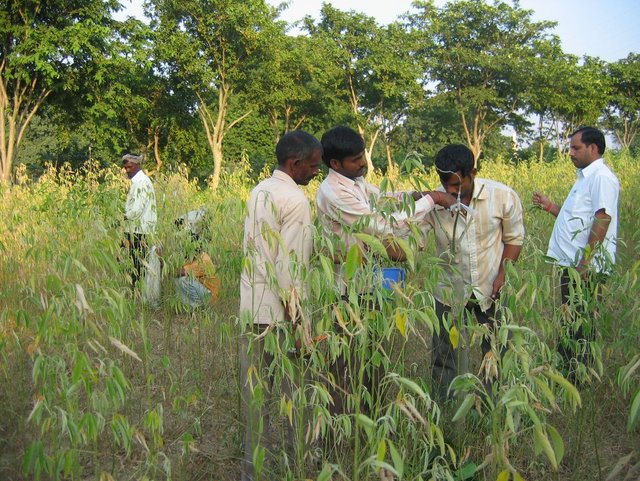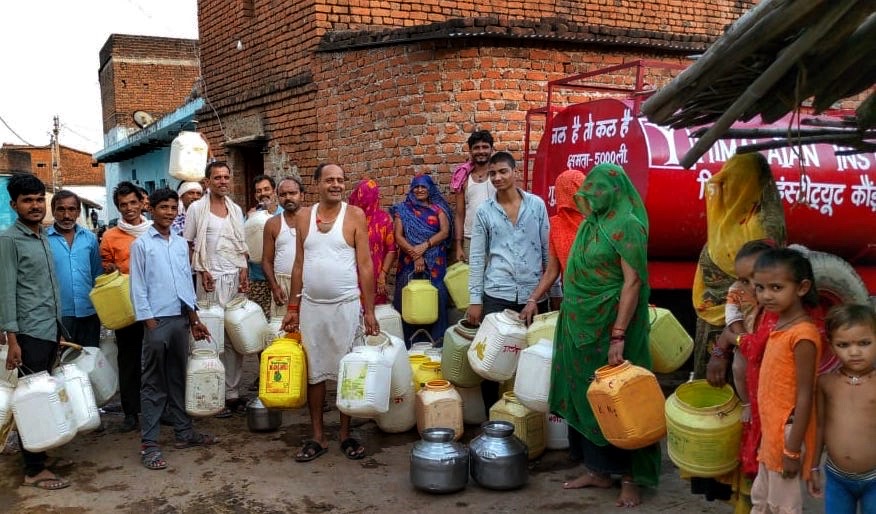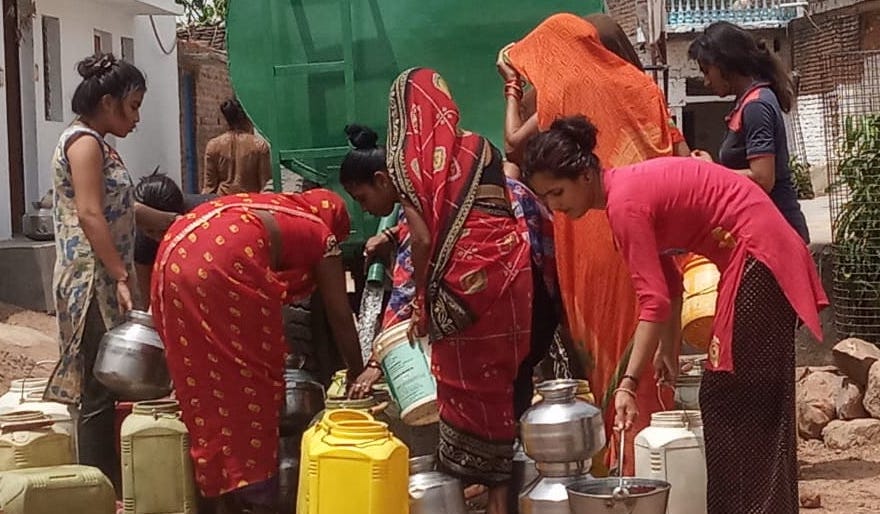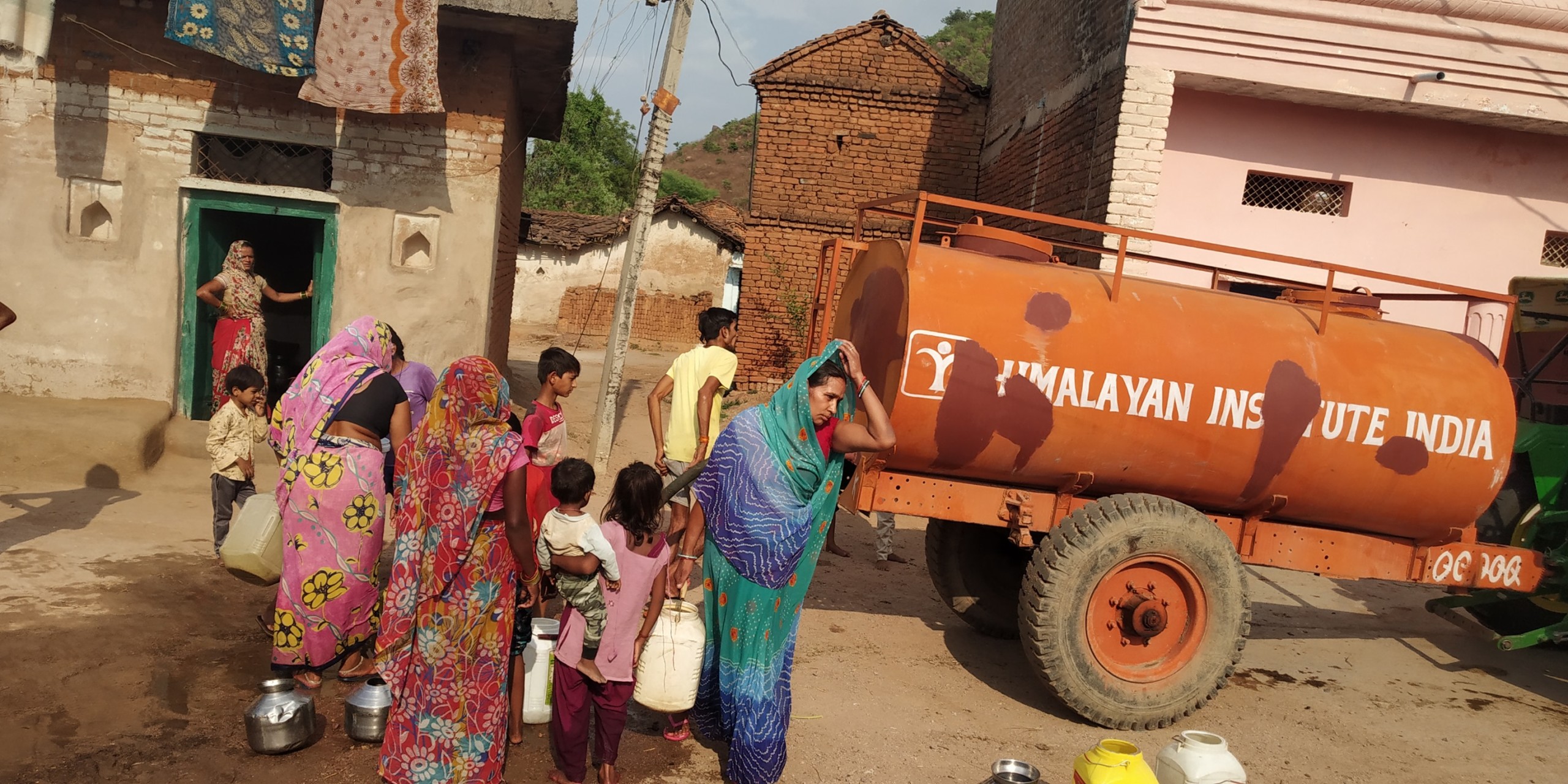In 2000, the Himalayan Institute purchased a 30-acre campus on the banks of the Ganges River in North India to create an educational retreat center. This campus was originally developed to host an excursion of over 500 people from around the world to the Maha Kumbha Mela in 2001. At the time it was purchased, the land was deserted, barren, and notorious for its population of cobras. To revitalize the land, a massive reforestation effort was undertaken. First, the natural water pathways were recontoured and retaining walls were created to prevent soil erosion, rebuild top soil, and resculpt the land. Thousands of trees were planted along the recontoured waterways and compost was added to enrich the soil. Many of the trees that were planted are medicinal and fruit trees, such as the Amla tree whose fruit is used in the Ayurvedic formulation Chyawanprash.
Now, after years of hard work, the land has been transformed. The trees that were planted as seedlings are now 30 feet high with thick, strong trucks. There are vegetable gardens that help to feed visitors and staff, and beautiful flower gardens to walk through. The new plant growth has encouraged the return of wild animals, including Nilgai, jackals, porcupines, iguanas, and a wide range of birds.
In 2006, the first pongamia trees were planted at the Allahabad campus in preparation for the Energy Farming Conference 2007 which was hosted at the Allahabad campus. Since then the site has served as a research and development laboratory for the Energy Farming projects. A variety of medicinal and biofuel crops have been planted for demonstration and to research best practices for cultivation. Medicinal crops such as turmeric and ginger are planted alongside pongamia and castor, and honey bee hives help to pollinate the aromatic herbs and flowers. These herbs are important components in Total Health formulations, and are being cultivated in larger quantities at the Institute’s Energy Farming program in Cameroon, Africa. By growing a sustainable source of natural medicine, Energy Farming can create jobs for both the growers and the distributors. In addition, Energy Farming techniques such as advanced composting, crown grafting and micro-rainwater harvesting are utilized and taught to local farmers during seminars hosted at the campus.
These efforts at HI Allahabad are part of HI Community Center projects around the world. By weaving Energy Farming and Total Health together, HI Community Centers seek to rehabilitate marginal land, while promoting self-reliance and stimulating the local economy.

When first purchased, the land was very dry.

New growth has turned the barren land green. Here, pongamia trees are being grafted to encourage faster growth and higher seed yields.

Sunset over the Ganga as seen from the Allahabad campus.





